
Starting June 1st, 2023 Our warehouse fee will be $0.65/cubic foot per month
In effort to lower the warehouse storage fee during inflation, we have went narrow aisle racking.This construction took us four months but the project is finally completed. With narrow aisle racking, we are able to drop storage by 24%.We as partners will go through this inflation together.
11/26/2023
Shipping delays, whether during rush hour traffic, train disruptions, or flight delays, are universally disliked, as people are frustrated by interruptions in their journey from Point A to Point B. This sentiment extends to shipping as well.
Despite global events like wars, pandemics, and economic downturns, customer expectations remain high, with a study showing that 52% expect their orders to be delivered within 2-3 days. For ecommerce businesses, effectively managing shipping expectations and addressing delays swiftly is crucial to prevent these issues from escalating into more significant problems.
This article of Worldcraft Logistics will delve into the common causes of shipping delays, their impact on both retailers and customers, and provide strategies for mitigating these challenges.
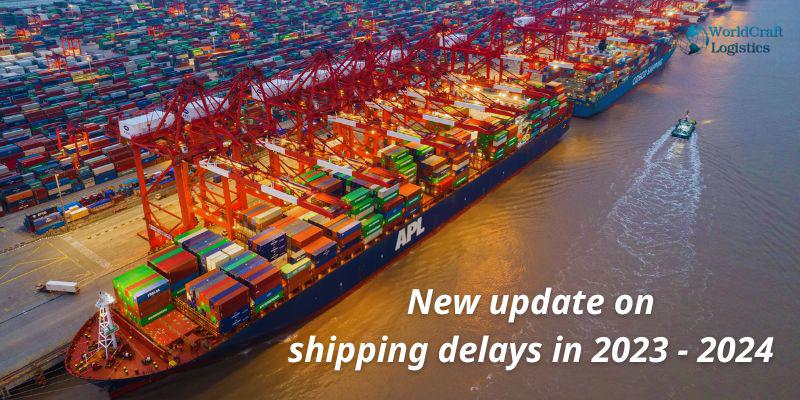
Throughout 2022, the global supply chain faces significant challenges due to the aftermath of COVID-19 lockdowns, international shipping restrictions, and the Russian invasion of Ukraine. A study by the Royal Bank of Canada in May 2022 revealed that about one-fifth of the global container ship fleet was mired in port congestion, leading to shipping delays from China to the United States by an additional 74 days on average.
However, as 2023 progresses, there is a noticeable improvement in shipping delays. Recent reports indicate a decline in customer experiences of package delays, dropping from 53% in 2021 to 21% now. Likewise, only 21% of merchants report ongoing regular impacts from supply chain disruptions on shipping operations, a significant decrease from 38% in 2021. This improvement is attributed to the easing of freight congestion and a reduction in global freight traffic, as manufacturers and suppliers manage excess inventory accumulation during the pandemic.
Despite these positive trends, supply chain and shipping delays are no longer the primary concern for many ecommerce businesses in 2023. The focus has shifted to the challenges posed by rising inflation and a potential recession, which threatens to reduce customer spending. Nevertheless, customer expectations regarding fast shipping (52% expect 2-3 days delivery) and transparency in order tracking (45% demand notification upon delivery) remain high.
In this year 2024, the key takeaway for businesses in this evolving landscape is the importance of exceeding customer expectations, especially in providing a timely and exceptional shipping experience, to maintain customer loyalty and business resilience in the face of economic uncertainties.
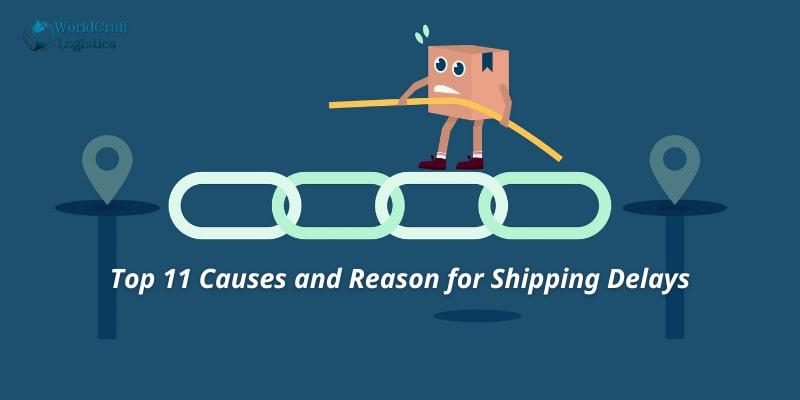
Shipping delays are never enjoyable. Your supply chain management process can be disrupted, which can lead to expensive operating costs, fines, and worst of all, unhappy customers. Freight delivery delays are frequently out of your control. However, there are some factors that you may influence to increase the likelihood that your package will arrive on time. Continue reading to learn the main causes of shipment delays and how to minimize their impact.
Lack of adequate paperwork and documentation can cause delays in all stages of shipment, including leaving the port of origin, going through customs, and arriving at the shipping destination.
Here are some mistakes to steer clear of:
A bill of lading, commercial invoice, origin certificate, and any applicable special certificates (if any) are required documents for shipping freight. Delivery is delayed because missing documentation results in a longer customs examination.
The clearance procedure is slowed down by errors in little data like the HS code, the nation of origin, and the product characteristics, which may even result in a cargo being refused entrance.
From the port of origin to loading, unloading, transfers, and customs, all of your documentation are scrutinized. Speed up the movement of your items using legible handwriting. Uncertain or hazy print won't be given the benefit of the doubt, especially when it comes to customs clearance, and will probably cause delays.
To prevent ink blurring, keep your papers out of the rain or other wet conditions.
Important information about your shipment is on the shipping labels. In rare circumstances, incorrect labeling might lead to a delay in customs clearance or lost shipment. Make sure your labels meet Amazon criteria if you ship through FBA.
An export license is necessary for commercial shipments to be transported internationally. The shipment might not be allowed to leave the nation of origin if your export license is missing or expired, which would slow down your entire supply chain.
Although documentation might be a pain, paying close attention to the details up front helps save delays. Thus, be sure to:
Verify that all of your documentation is organized, current, and legible.
Before shipping your items, make (and adhere to) a checklist of all the necessary documentation.
Work with dependable partners to prevent mistakes

Peak seasons are times of the year when greater quantities of freight are shipped than usual.
Back-to-school buying traditionally kicks off the peak maritime freight season in August, and it lasts until November as firms get ready for the US holiday season. After a slowdown in December and early January, the Lunar New Year in certain East Asian nations in late January and early February causes a halt to production and exports.
Due to heavy shipment volumes during the busy season, your freight may be delayed.
It is a classic case of strong demand and insufficient supply, which strains the logistics system and supply chain.
One of the major causes of delays is the peak season. Additionally, it can result in a peak season premium or higher freight charges.
Many importers and exporters divide their cargo into separate shipments and ship ahead of time to assist prevent delays during the busiest times of the year.
The Wall Street Journal claims that it takes 3 days and 3000 personnel to unload a ship with 20,000 containers by laboriously using equipment. One of the main factors contributing to shipping delays and high operational expenses is this resource-intensive process.
Working with your freight forwarder to prepare for any additional equipment needed to handle your goods will help you prevent unanticipated delays. Select reputable trucking services and secure the necessary permissions in advance to ensure that your cargo may move as soon as it is unloaded.
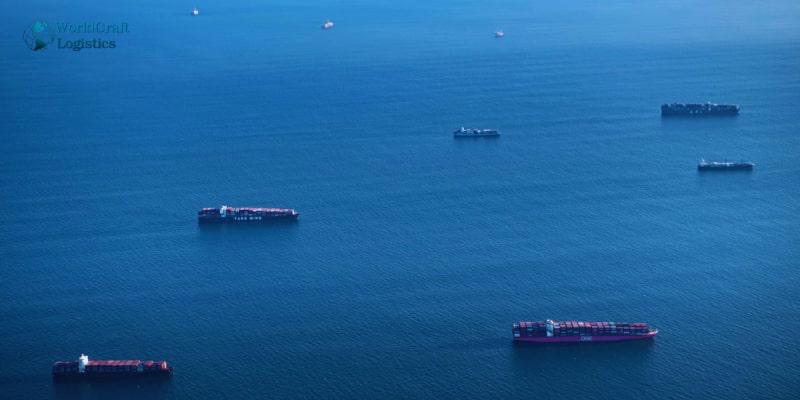
Things just happen sometimes. When they do, it has an impact on global shipping. Recent instances include:
Due to COVID, equipment and labor became scarce in many nations. A unexpected increase in demand has caused port congestion and shipping delays as the sector continues to recover from the effects of the pandemic.
On important Asian to US shipping corridors, factory-to-door delivery times nearly doubled as COVID-19 restrictions loosened in 2021. Since the beginning of 2022, the typical transit times between China and the US have been rapidly decreasing. However, backlog and congestion continue to be one of the main causes of shipment delays.
The Ever Given, a sizable container ship, blocked the Suez Canal for six days in March 2021. The Asia-Europe lane had significant shipment delays due to the 369 additional ships that were waiting in line to pass the canal on both sides. The total incident cost $9.6 billion in lost merchandise every day.
Due to the conflict in Ukraine, major Russian ports were shut down, and Black Sea operations came to an end. Major commodity imports and exports were negatively impacted.
These unanticipated occurrences had disastrous implications for the shipping sector as a whole and the supply chain network.

Any modifications in global consumer behavior have an immediate impact on the shipping sector.
For instance, customer tastes have shifted toward online shopping and eCommerce globally during the past two years. Due to this, there was more than ever a cross-border demand for goods. However, the growth of infrastructure and the construction of boats were unable to keep up with the quick rise.
This was a significant factor in the global supply chain delays for both commodities and ships. In fact, estimates claim that 42% of online buyers abandoned their shopping carts because of extended delivery periods.
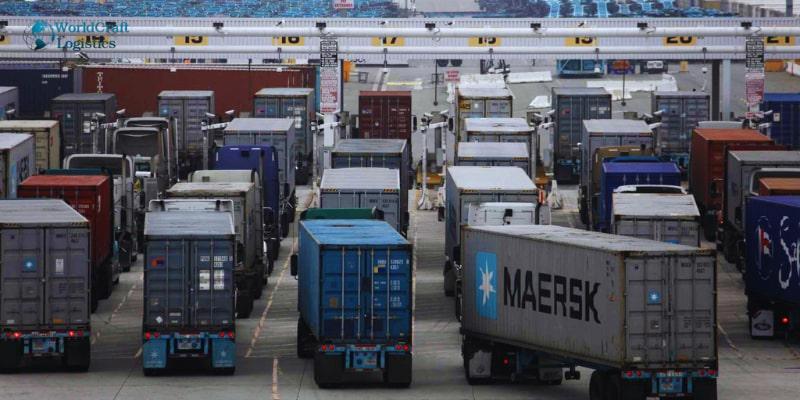
US ports have been severely congested as a result of a lack of labor, space, and handling tools.
The Oakland port was one of the world's worst ports for congestion in Q1 2022, with an average dwell time of 7 days.
When it comes to traffic congestion and vessel delays, other significant ports like Long Beach, Charleston, and LA trail far behind.
Even when cargoes are delivered on time, ships must wait longer than normal before the cargo is eventually unloaded.
The simplest approach to deal with this unpredictability is to send your product to ports that are less congested and add buffer time in your shipment plan.
For shippers and forwarders, delays in truck loading or capacity are a huge pain. The lack of chassis (the load-bearing equipment used by trucks) makes the trucking delays much worse.
The flow of freight is hampered by bad weather across all modes of transportation. The reduced visibility on airports and coasts frequently causes scheduling issues for ships and airlines. Unpredictable weather is to blame for over 23% of all delays in road transportation.
On national and international holidays, many carriers follow closures, so orders won't be picked up or shipped on those days. Even a one-day lag might cause substantial backlogs and bottlenecks that prolong shipping.
Increases in order volume throughout the Christmas season in Q4 might easily result in significant shipping delays. During the busiest delivery times, couriers might not be able to handle an increase in demand. Additionally, when the courier isn't working, the volume of shipments will increase, overwhelming the supply system.
Without the people who choose and pack orders, load and unload goods, sort them, and convey them to the designated location, the shipping industry cannot run. Any labor-related problems can have a significant impact on the sector and cause costly delays.
Factory and warehouse breakouts during the COVID epidemic were a major contributor in delivery delays. Economic considerations, labor shortages, and strikes can all cause labor-related issues that cause shipping delays.
For instance, supply networks across the US could have been stalled by freight train strikes in the latter part of 2022. A nationwide rail shutdown, according to rail stakeholders, would cost $2 billion per day, he claimed.Even the prospect of a strike this size worried the merchants.
A strike of this size might result in significant shortages of retail goods, higher prices for consumers, and even transportation delays.
A rolled shipment is one that has not been placed into the ship it was intended to go on. When client demand rises and carrier capacity declines, this occurs. Rollings can also happen if your package lacks the proper documentation.
You may avoid this difficulty by selecting the best logistics supplier. The urgency of your cargo is determined by you, the consumer. For the most time-sensitive cargo, getting loading priority, equipment priority, and space priority can be the most effective method.
Join the glossary series shared by Worldcraft Logistics experts to learn more. Hopefully the articles below will provide you with new knowledge when starting to learn about the logistics industry:

As a business owner, the greatest ways to lessen the effects of shipping delays are to:
Be prepared in advance for shipment delays
Recognize potential shipping delays in advance
Use a tested tactic when a shipping delay occurs.
Make provisions for backups in case of unexpected disruptions
Here are some pointers to assist you put these tactics into practice for your company and manage shipping delays expertly.
According to a poll conducted in 2021, 83% of buyers choose free shipping over speedier shipment when given the option. This suggests that the majority of customers are more inclined to convert and wait a few extra days for their product if they can get free shipping. Offering free shipping, if your company can afford it, is a terrific method to protect your client happiness from shipping delays.
We spread out our product over WorldCraft's fulfillment network so that we can be nearer to important shipping carriers, a larger number of our clients, and major distribution centers. This has reduced freight expenses as well as transit times.
Offering free shipping thresholds and 2-day shipping has increased conversions. Our fulfillment costs on comparable orders decreased by 25% after we switched to WorldCraft from our prior 3PL.
Michael Peters, Vice President of TB12's E-Commerce Operations
To prevent further disruptions and consumer annoyance due to shipping errors or issues, transparency and communication are crucial.
Keep lines of communication open with your suppliers so you can quickly acquire updates in the event of any delays, which will allow you to address the problem before it arises. Additionally, this will enable you to set up backup inventory and alternate suppliers as needed.
Additionally, keeping open lines of communication with your clients can lessen their dissatisfaction. Maintaining client satisfaction in the face of unforeseen difficulties requires sending consumers follow-up texts or emails on a frequent basis and offering attentive customer care when there is a delay in their order.
Anxious clients may feel more at ease knowing exactly where their order is by being able to track it. Ecommerce order tracking provides customers with an expected ship date and ETA for their package as well as confidence that it is on its way, even if a shipment is delayed. This exposure enhances the customer experience and may even increase a client's faith in your company.
"With WorldCraft, I can offer reasonable shipping costs within the US and move more units than I could if I were shipping from Australia at exorbitant postage rates. Additionally, WorldCraft Logistics offers tracking—even for international orders—and assists with foreign customs. I can meet consumers halfway by using DHL and other services through WorldCraft." Founder Jimmy Nguyen Tran

In the long term, negative customer feedback and lost sales may cost a company far more than just one terrible delivery experience.
If there are substantial delays in shipping products to clients, think about providing refunds, coupons, or cash. To compensate for every late delivery, however, will have a major negative impact on profit margins, so be sure to carefully consider when compensation makes sense.
A backlog on the courier's end (typically the result of labor shortages and resource constraints) may cause some delivery delays. As a result, even when many packages have already arrived at the carrier facility in the destination city, delivery may take some time.
By providing local pick-up alternatives, businesses enable customers to receive their packages immediately rather than having to wait for delivery. Customers' complaints can be reduced by in-store pickup or pickup at a carrier storefront (such as a FedEx or UPS site), even if these options are often only possible in larger cities or for firms who have brick-and-mortar or B2B presence.
It is crucial for merchants to monitor every stage and activity along their supply chain, from procurement to distribution, in order to prevent shipment delays in the first place. Knowing what's going on at every point in the supply chain makes it simpler to foresee issues that can result in shipping delays.
For instance, if a new law in your supplier's nation would have an impact on the availability of raw materials, you could prevent delays by looking for backup providers well in advance. Similar to this, if your inventory is completely stocked but you learn that a major winter storm is on the horizon, you can place more purchases ahead of time to avoid backorders.
SEO
Digital Marketing/SEO Specialist
Simon Mang is an SEO and Digital Marketing expert at Wordcraft Logistics. With many years of experience in the field of digital marketing, he has shaped and built strategies to effectively promote Wordcraft Logistics' online presence. With a deep understanding of the logistics industry, I have shared more than 500 specialized articles on many different topics.

Education
01/05/2025

Education
02/18/2025

Education
01/01/2024

Education
08/28/2024
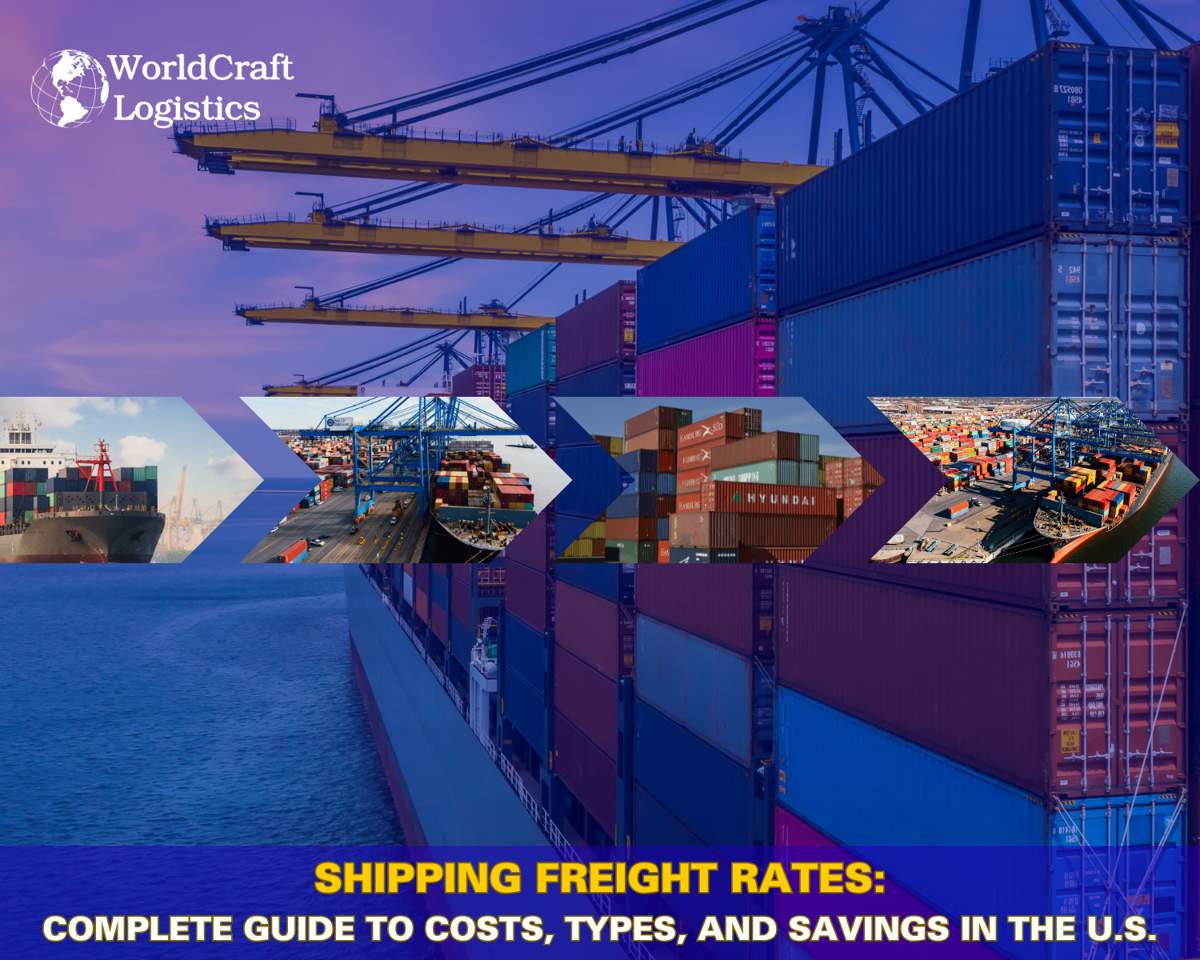
Education
09/09/2025